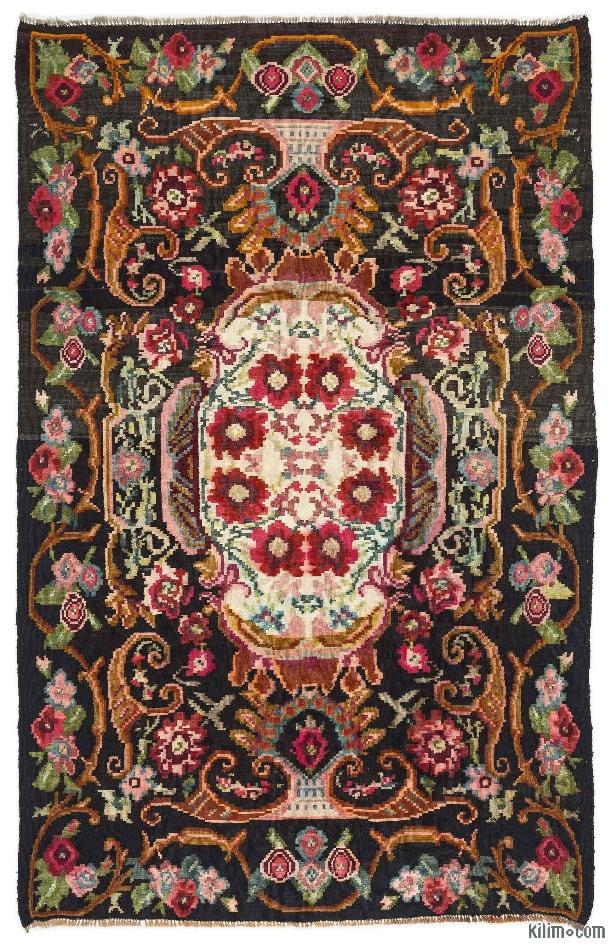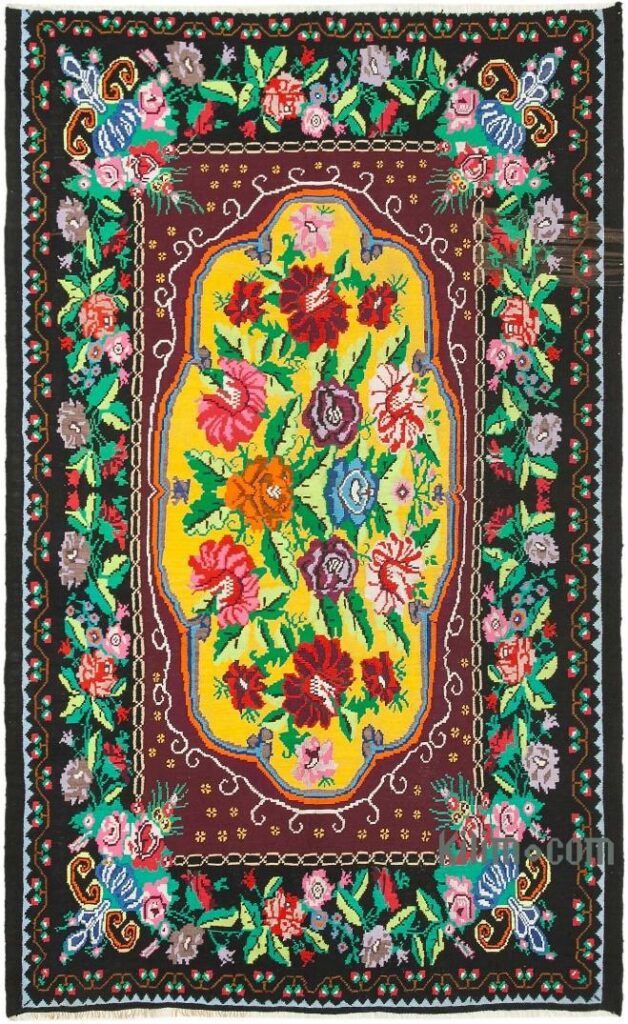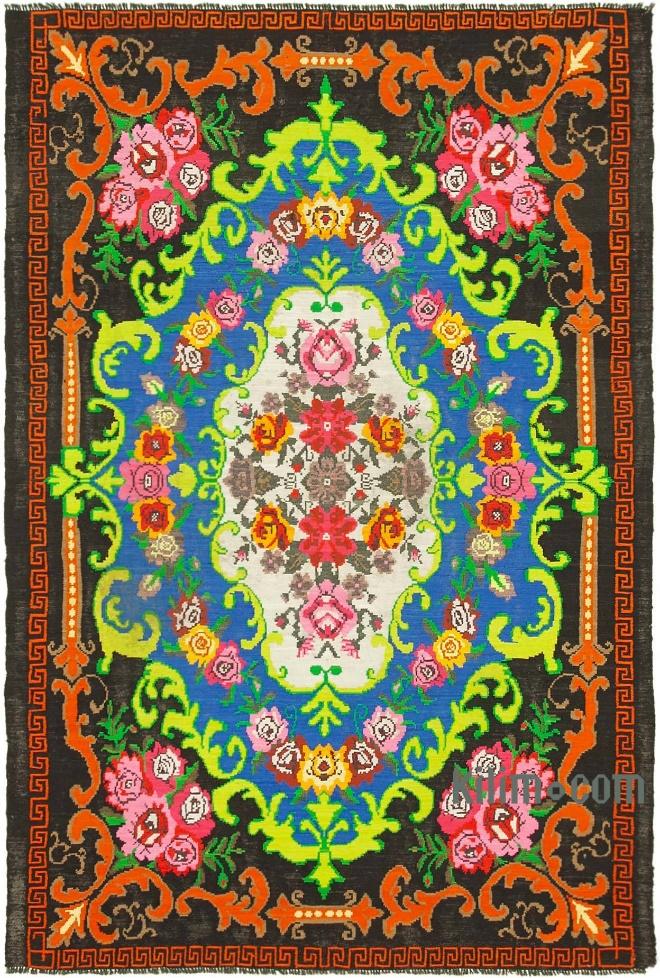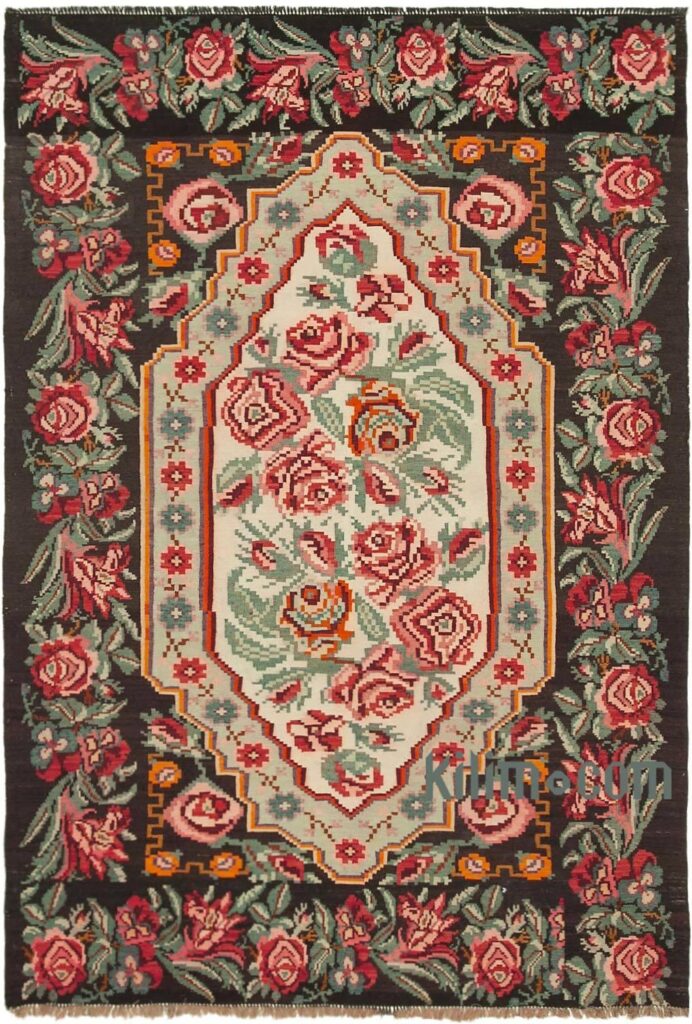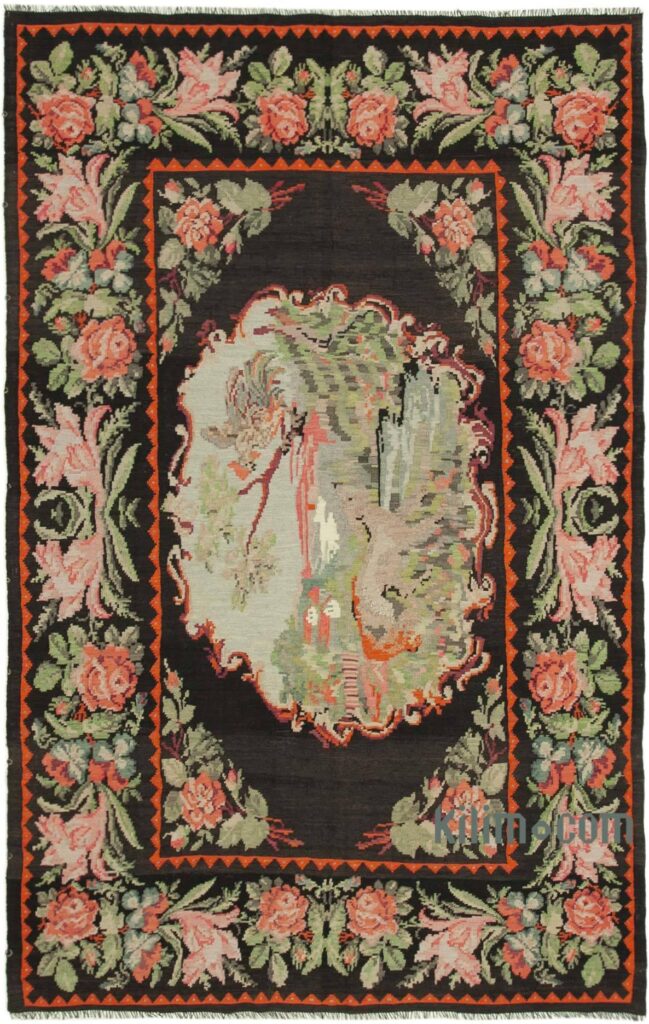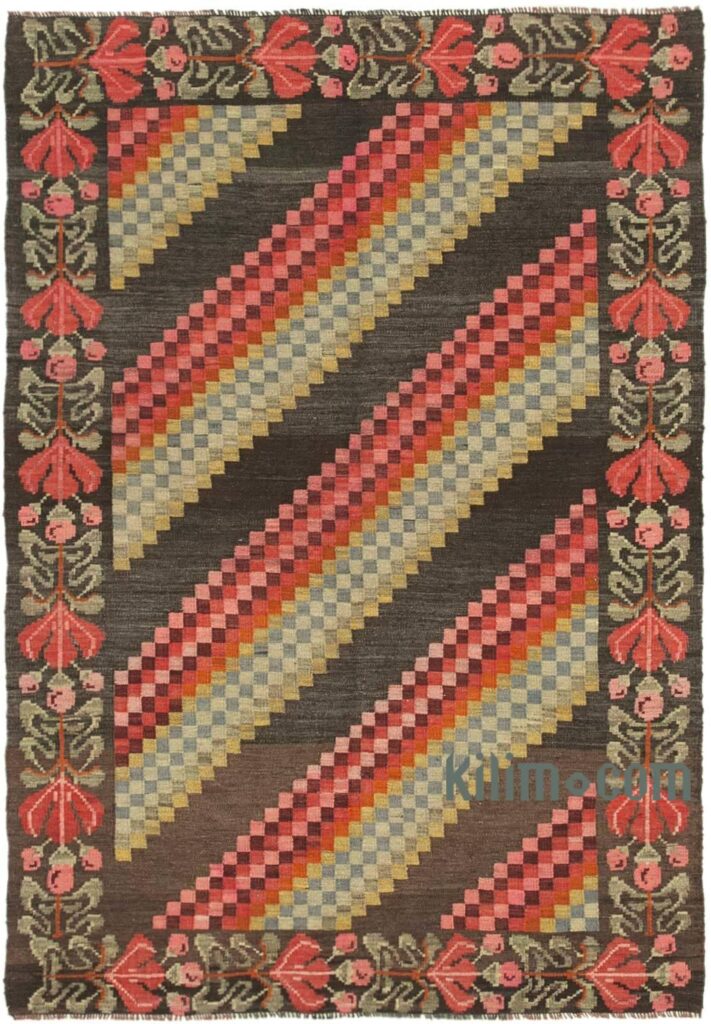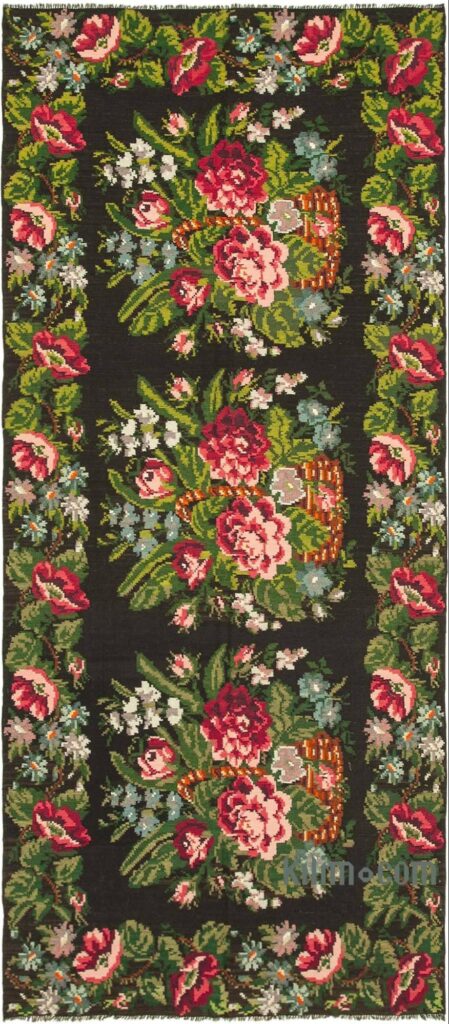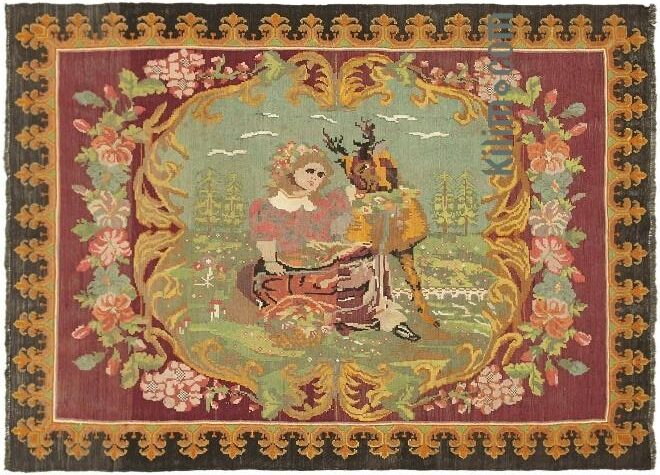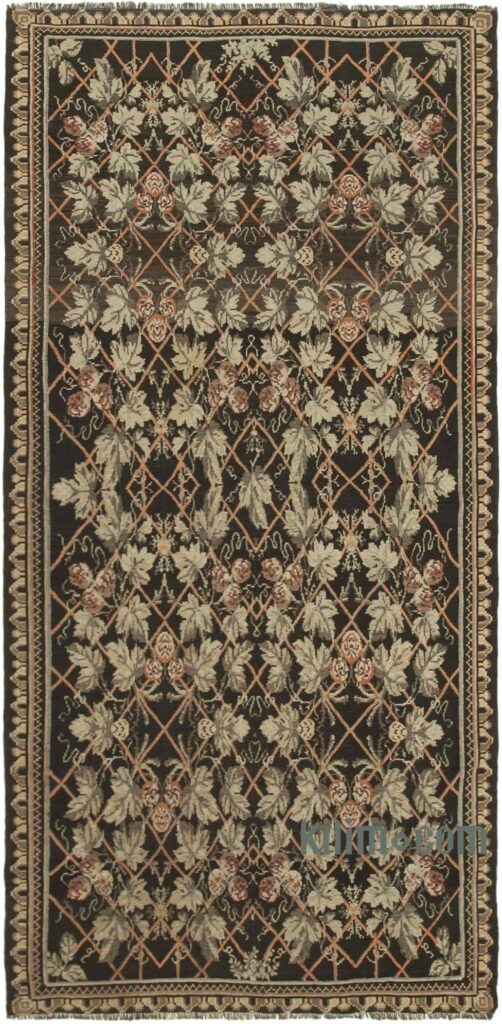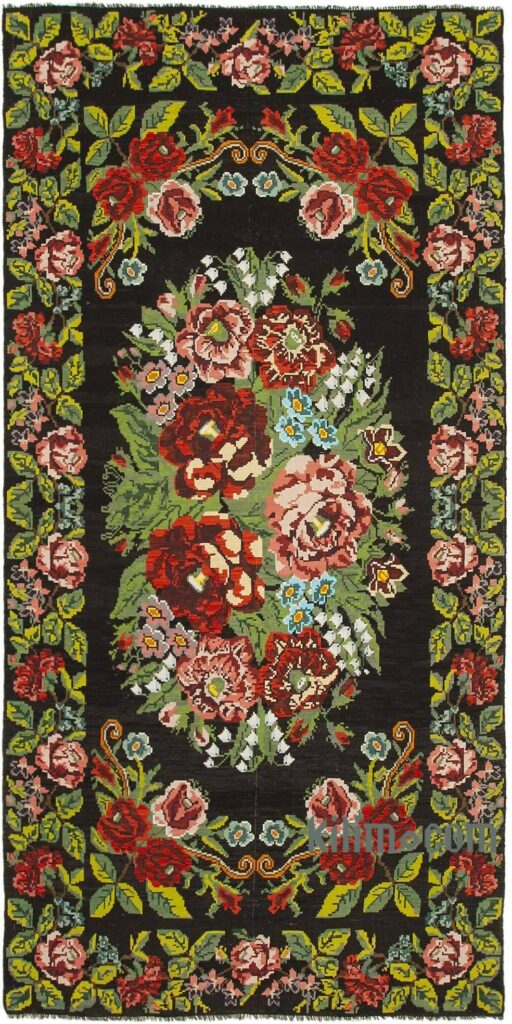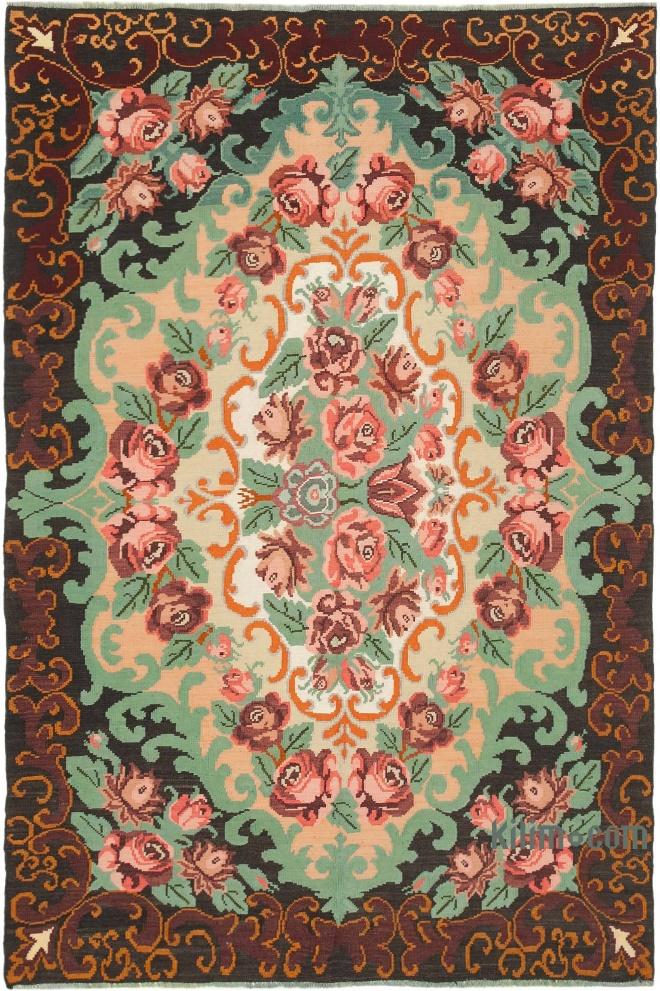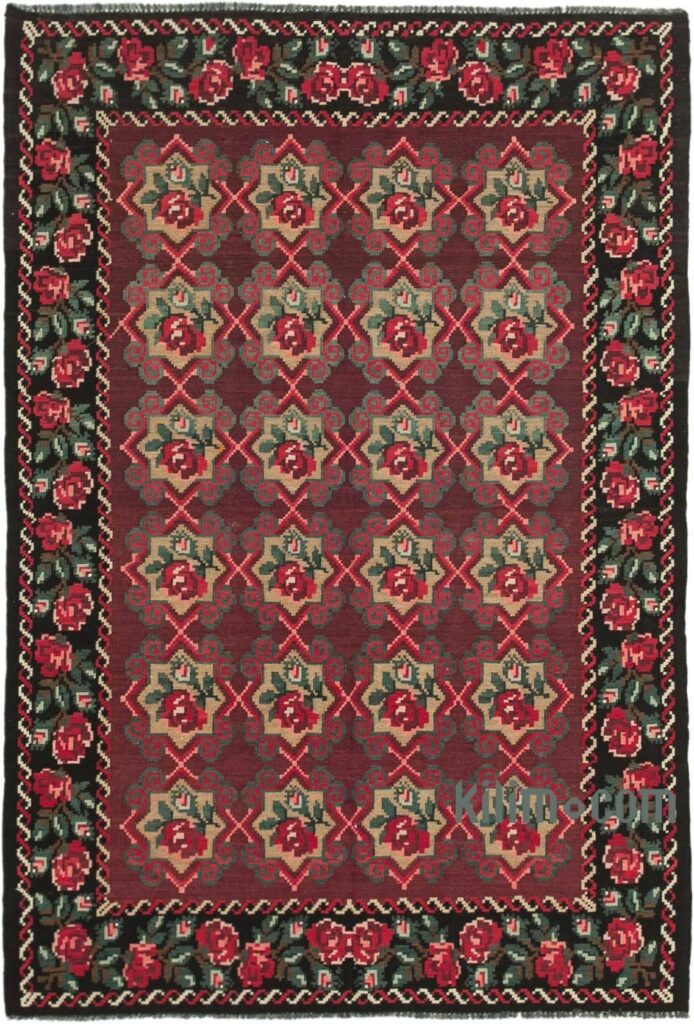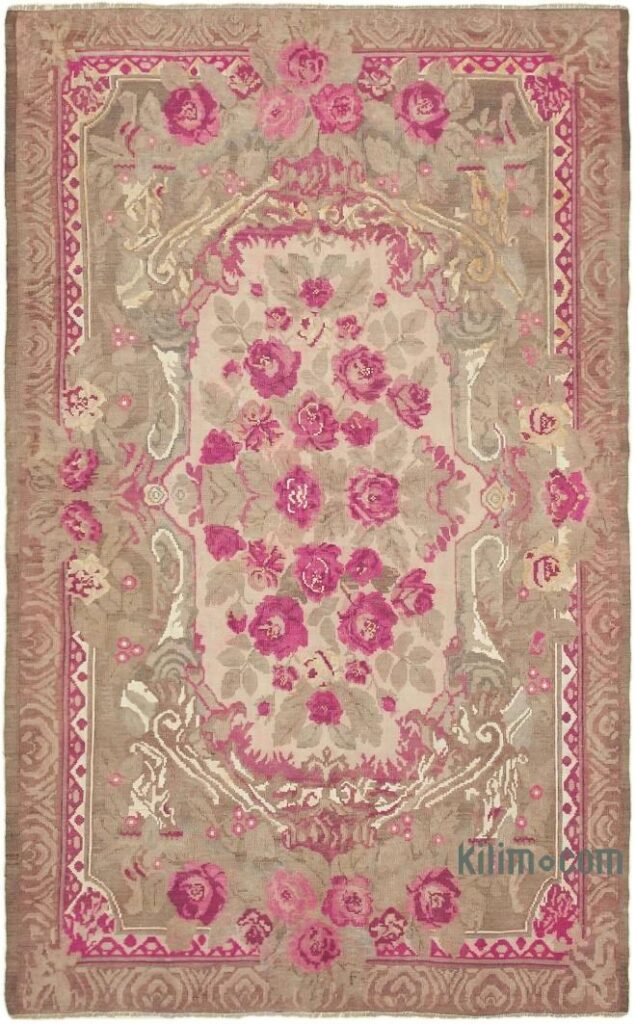Moldovan Kilims

Moldova is an Eastern European country, bordered by Romania to the west and Ukraine to the north, east, and south. The capital and largest city is Chișinău.
The name Moldova is derived from the Moldova River; the valley of this river served as a political center at the time of the foundation of the Principality of Moldavia in 1359. Most of Moldovan territory was a part of the Principality of Moldavia from the 14th century until 1812, when it was ceded to the Russian Empire by the Ottoman Empire (to which Moldavia was a vassal state) and became known as Bessarabia.
The historical region of Bessarabia bounded by the Dniester River on the east and the Prut River on the west. About two thirds of Bessarabia lies within modern-day Moldova, with the Ukrainian Budjak region covering the southern coastal region and part of the Ukrainian Chernivtsi Oblast covering a small area in the north.
Some East European piled rugs have been branded ‘Bessarabian’. However the region is a source of flat-woven rugs which may be attributed to either Bessarabia or Moldova.
Technical aspects and the structure of Moldovan Kilims
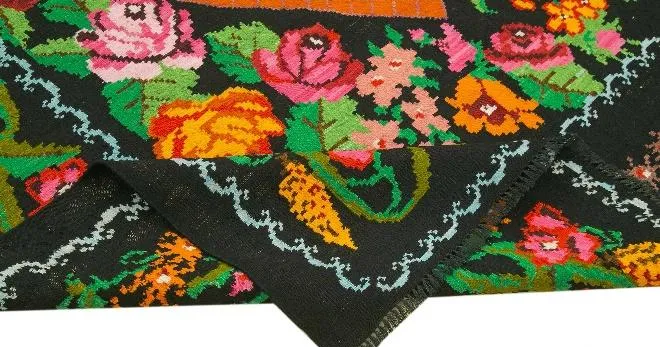
Moldovan kilims have woolen warp and wefts. Cotton is rarely used. Goat hair may also be used. Use of eccentric wefts help Moldovan weavers to make curvilinear patterns which is a rare feature for flat-weaves. Rug sizes are common. Embroidered items are traditionally produced here.
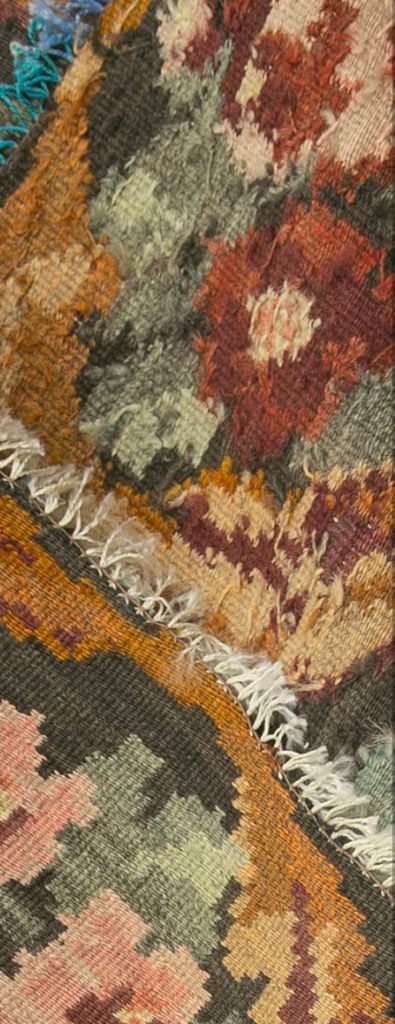
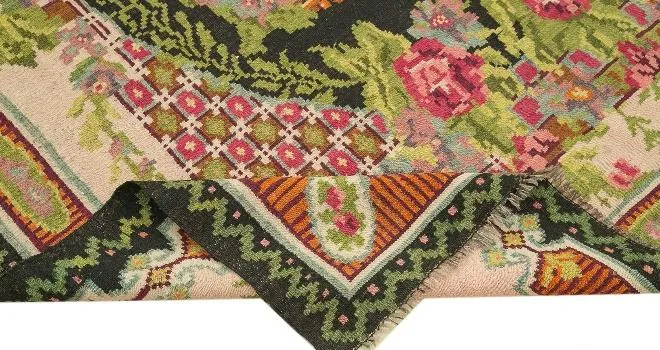
Dyeing and painting of Moldovan Kilims
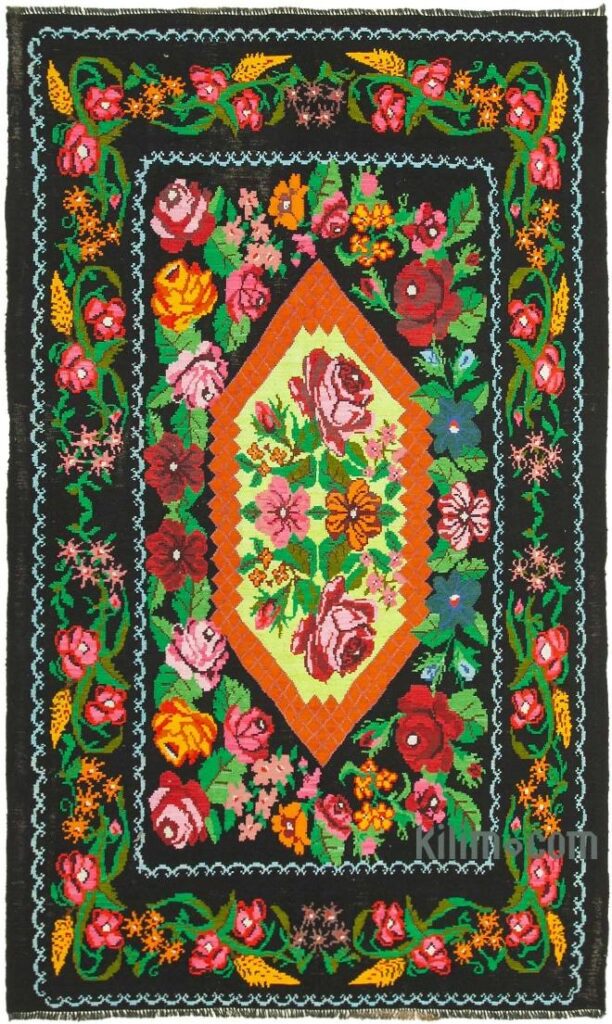
Black is the most common color used for fields. Brown and gray fields are not rare. These 3 dominant colors are mostly obtained from undyed wool. Shades of red and green serve chiefly for the patterns in the so called “Rose Kilims”. Red shades include rosy and pink as well as purplish red and mauve.

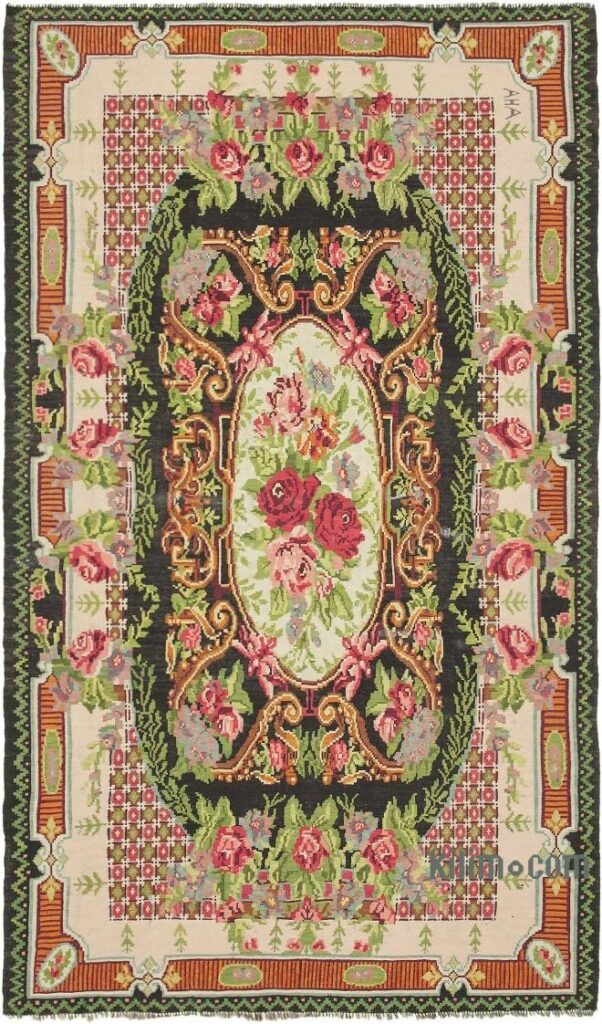
Designs and patterns of Moldovan Kilims
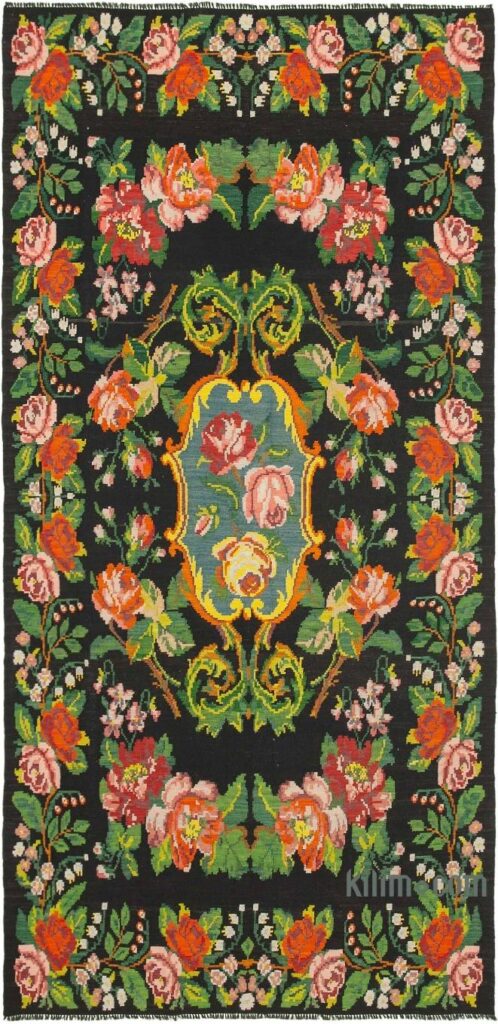
Most of the Moldovan and Bessarabian kilims are designed with rose patterns, rendered naturalistically. Such patterns may be used in both all-over and medallion designs. Use of eccentric wefts help Moldovan weavers to make curvilinear patterns which is a rare feature for flat-weaves.
Some kilims have inscription. Latin alphabet is used Moldovan kilims and Cyrillic for Bessarabian ones.


